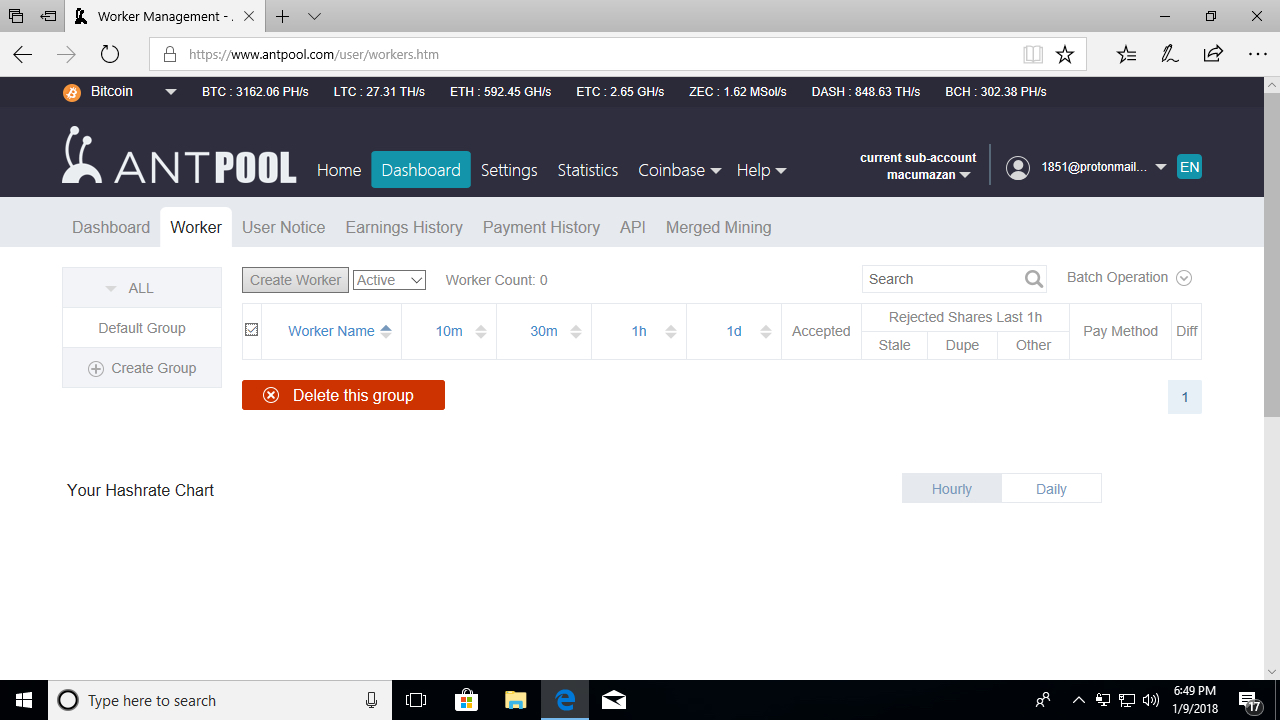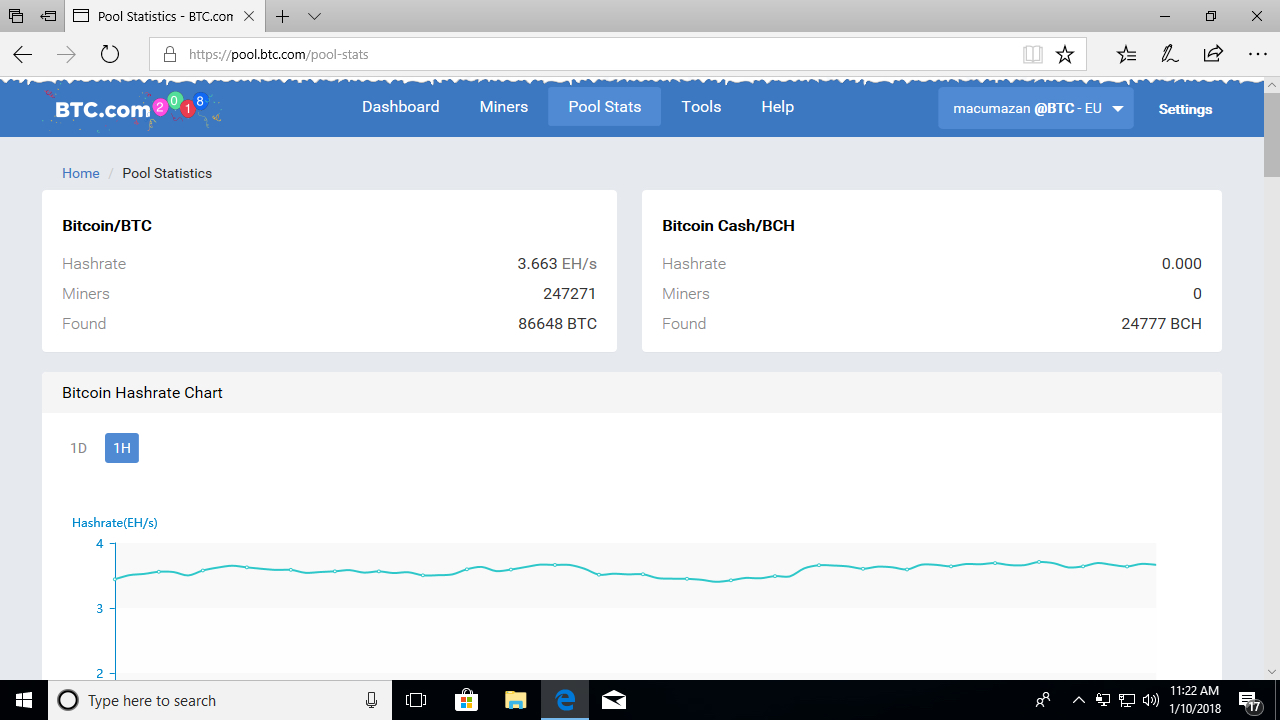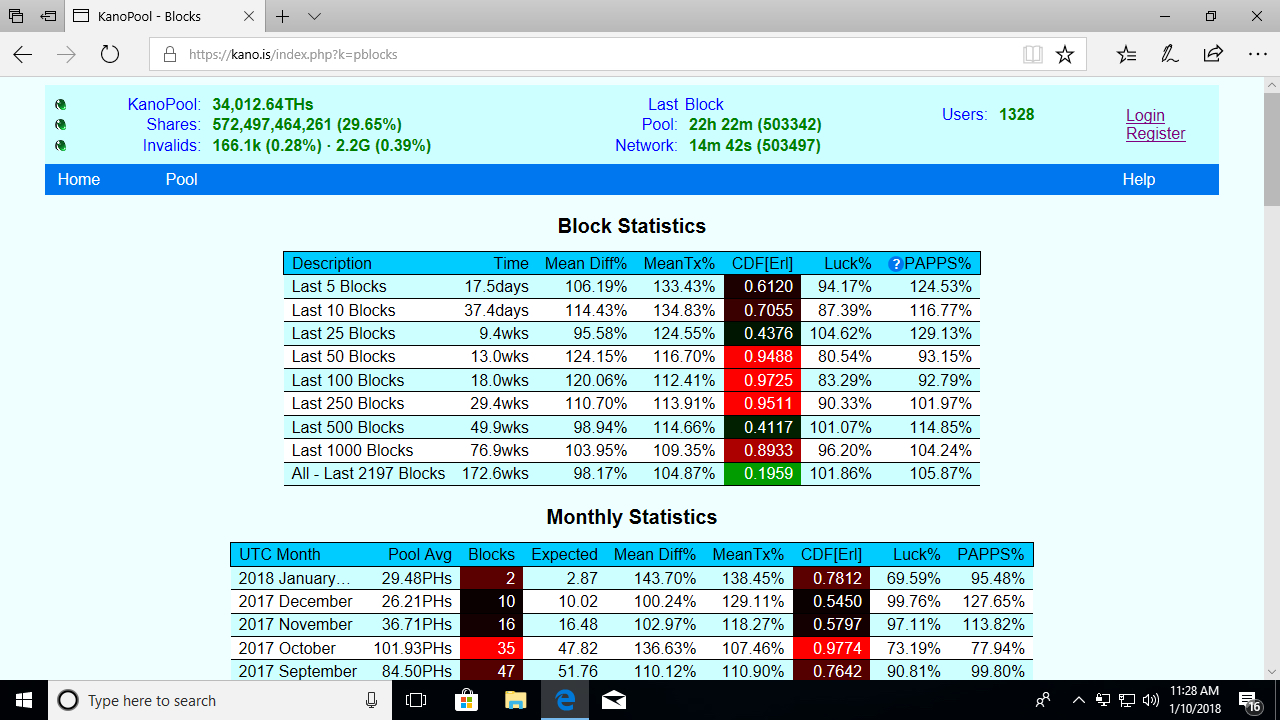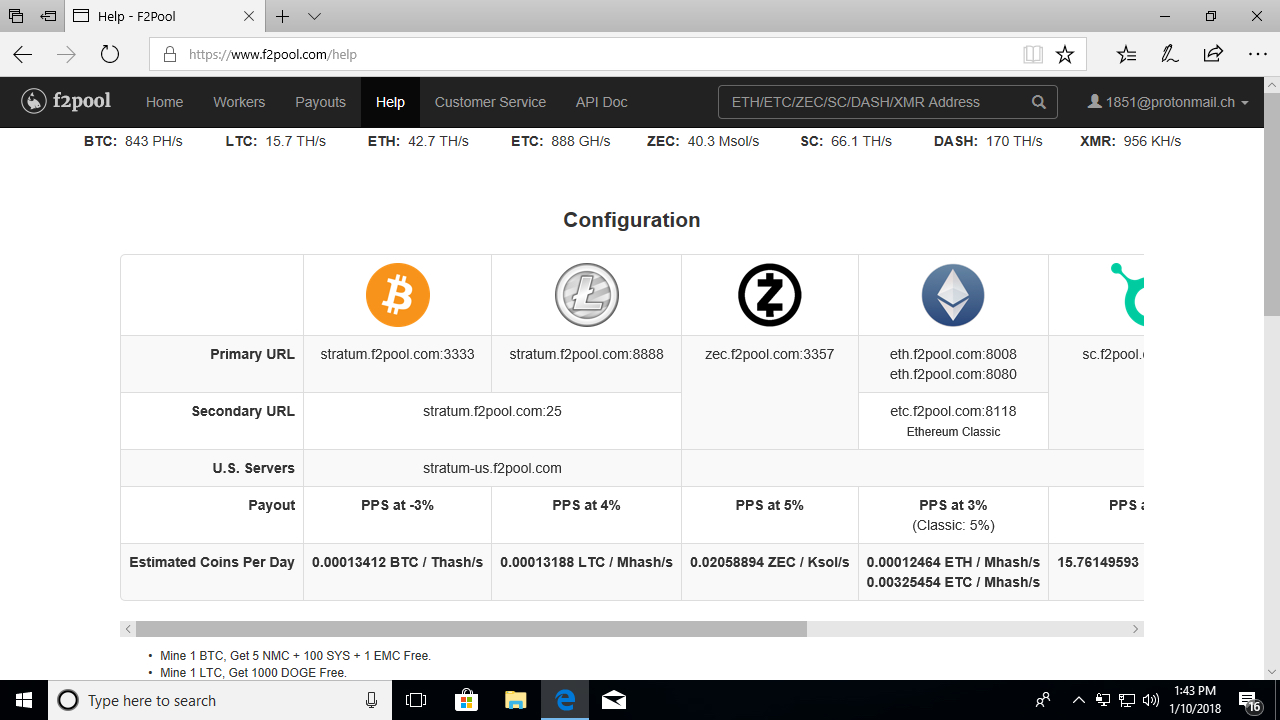If you're serious about cryptocurrency mining, then before you begin mining right away, you should first look at the best mining pools of 2018 for cryptocurrency.
This is because the most popular currencies such as Bitcoin and Litecoin can take centuries to generate a valid 'block' on your own and make money.
With Mining pools, you can work with other miners and devices across the internet to pool your resources in performing complex calculations to generate blocks of data. The mining 'reward', as it's known, is then split proportionally amongst each participant.
This makes mining much faster, but don't just join the first mining pool you see. This is because the method used to allocate rewards and the final amount you'll receive will depend on the mining pool in question.
So, in this guide we've listed five of the best known pools online today, to help you decide which is right for you.
Where possible we've found pools with multiple servers around the world, allowing you to connect easily. If these pique your interest and you want more information, head over to the Bitcoin Wiki to see a detailed comparison of all the top pools.
- We also show you how to mine Bitcoins

Slush Pool started out in 2010 when it was known as Bitcoin Pooled Mining Server before rebranding itself. It's the oldest currently active mining pool and has an excellent reputation for stability and accuracy. Currently Slush Pool is the fourth largest mining pool representing around 11.4% of hash power overall.
The sign-up process is very simple and you can create a demo miner in order to familiarize yourself with the dashboard. The website itself offers both a simple and a more advanced interface for experienced miners.
You can also set your minimum pay-out threshold to as little as 0.001 BTC, but there are additional fees for any pay-outs under 0.01BTC.
Slush Pool is democratic in that you can register your preferences about the kind of mining you want your devices to perform, for instance: Bitcoin Core strict rules only.
The website also has some very useful sections for those who are new to mining. This section on mining rewards is particularly helpful as it contains a detailed explanation of how pay-outs are measured by each user's scoring hash rate. If you switch from Slush Pool to another, then try to return, your score will drop significantly.
Pool fees stand at 2% which is a little higher than some of the other pools out there. Slush Pool has servers in the US, Europe, Singapore and China.

AntPool is currently the largest mining pool operating today, representing just over a quarter of hash power worldwide. It's owned and operated by Bitmain, a China-based firm which also manufactures the Antminer series of ASIC mining devices (you can check out our guide to the best ASIC devices here).
AntPool has servers all around the world and makes use of an innovative peer-to-peer mining protocol to link your device to the one nearest to you during setup, for a faster and more reliable connection.
Once you've set up your account and entered your wallet address, payments are sent every day between 08:00-15:00 Beijing time (which is eight hours ahead of the UK), provided that the amount you've mined is at least 0.001 BTC.
Being the largest pool allows users some perks in that they can choose how they want to be rewarded. One method is PPS (Payment Per Share) which means you're charged 4% on pay-outs plus 2% of any transaction fees earned. You can also choose PPLNS (Payment Per Last N Shares) which is free but AntPool will keep all transaction fees.
You can mine solo if you wish but it's very unlikely you'll make a profit doing so unless you have a colossal amount of hash power. Whichever method you choose, remember that individual pay-outs are generally smaller for larger mining pools.

This outfit is one of the most well-known brands in the world of cryptocurrency, and owns the domain Bitcoin.com as well as BTC.com. Prior to starting a mining pool in 2016, BTC.com was already famous for creating a powerful Bitcoin wallet as well as its own blockchain explorer.
BTC.com operates one of the most popular mining pools, vying with AntPool for the top spot. It currently represents over 20% of overall global hash power. Mining servers are located in both the EU (Germany) and China. BTC.com currently supports mining only Bitcoin and Bitcoin Cash.
Ever innovative, BTC.com has its own method of rewarding miners known as FPPS (Full Pay Per Share). FPPS calculates a standard transaction fee within a given period,adds it to the block reward (currently 12.5 BTC) and then distributes the whole to miners as with traditional PPS (Payment Per Share). Sharing transaction fees, especially when they are high, makes mining much more lucrative which may explain BTC.com's popularity.
The only small criticism we can level at BTC.com is that we found the website to be rather flaky. For example, the page explaining how FPPS works failed to load, and while the help section of the website is useful, there's no specific ‘getting started’ guide as with Slush Pool. We were nevertheless able to find all the information needed to configure a miner. Windows users can also add and configure miners easily using BTC tool and BTC Smart Agent.

KanoPool has been around since 2014. Despite being one of the smaller pools out there (currently representing only 0.3% of global hash power), it has become popular due to its low mining fees and easy setup.
Registration with KanoPool is optional: when configuring your miner, you only need to enter your BTC wallet address as the username to begin mining right away. However, users who do choose to register can view more detailed statistics about the mining pool.
The payment method used by KanoPool is PPLNS (Payment Per Last N Shares). 'N' in this case is five times the network difficulty, immediately after a block is found.
The pool fee itself is 0.9% and transaction fees are included in the block reward, meaning pay-outs are quite generous relative to rival larger mining pools, although payment may take some time. You can find a more detailed explanation of how pay-outs are managed on KanoPool's website.
If you do choose to visit the KanoPool web page, you'll see that the layout is extremely simplistic, and there are no detailed tutorials as all the information you need to get started is on the help page. Nevertheless Kano himself is an active participant in the BitcoinTalk forum and is very prompt to respond to questions about the pool.

F2Pool (also known as DiscusFish) is a Chinese-based mining pool and has been operating since 2013. It has several servers on the Chinese mainland as well as in Hong Kong and the US.
F2Pool is relatively large, representing around 5.5% of the hash power for the most popular Bitcoin mining pools. It’s also one of the most diverse pools in that while you can mine BTC, F2Pool also supports Litecoin, Zerocoin, Ethereum, Siacoin, DASH and Monero to name just a few.
Pay-outs are made at midnight UTC each day on a PPS (Payment Per Share) basis of negative 3%. The pool keeps all transaction fees. Right now, the threshold for Bitcoin payments is 0.005 BTC.
The website is also currently offering a little extra incentive to miners in that once your mining totals 1 BTC exactly, you'll automatically receive 5 NMC (Name Coin), 100 SYS and 1 EMC (Emercoin). Currently these have a market value of around $640 (around £470).
The website itself is well laid out and contains useful information, but non-Chinese users who need support are encouraged to use the official F2Pool English language thread in the BitcoinTalk forums.
The sign-up process for the pool can be a little tricky as you need to fill out a Captcha and also verify your identity via text message, meaning you must have access to a mobile phone to start mining.
- We’ve also picked out the best graphics cards for mining Bitcoin, Ethereum and more
- Check out also the best VPN services of 2018 that we've nailed down.
from TechRadar - Internet news https://ift.tt/2DynbL6
via IFTTT


0 comments:
Post a Comment